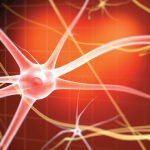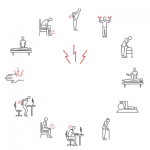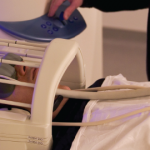Treat-to-target is a widely used approach for rheumatoid arthritis, in which rheumatologists prescribe treatments to reach established benchmarks of disease activity.1 Is it time for a similar approach for fibromyalgia treatment, even though its pathogenesis, disease-activity measures and treatment algorithms are less well understood? Three fibromyalgia researchers present their case in a new paper, “Treat-to-Target…
Lady Gaga Calls Off Tour, Citing Pain from Fibromyalgia
LOS ANGELES (Reuters) – Lady Gaga on Monday called off the European leg of her world tour, saying she was suffering from severe physical pain and was seeking medical treatment. The Born This Way singer, 31, who says she suffers from fibromyalgia, also canceled an appearance at a music festival in Rio de Janeiro last…
Little Evidence Shows Cannabis Helps Chronic Pain or PTSD
(Reuters Health)—Even though pain and posttraumatic stress disorder (PTSD) are among the most common reasons people use medical marijuana in the U.S., there isn’t much proof cannabis works for either one of these conditions, two research reviews suggest. That’s because there hasn’t been enough high-quality research to produce conclusive evidence of the benefits or harms…

Mind-Body Techniques for Pain Management
CHICAGO—Delia Chiaramonte, MD, associate director of education at the Center for Integrative Medicine at the University of Maryland School of Medicine in Baltimore, presented the newest thinking on pain to a gathering of rheumatologists at the ACR’s State-of-the-Art Clinical Symposium in April. She began by explaining that pain is more than nociception. Nociception stimulates nerves to…

Rheumatologists Respond to Prescription Opioid Analgesic Crisis
The alarming statistics on prescription opioid overdoses are well known to medical professionals, thanks to the Centers for Disease Control and Prevention (CDC)’s widely cited finding that deaths from opioid analgesics have increased fourfold since 1999.1 Half of all fatal drug overdoses now involve opioids prescribed by a doctor. Meanwhile, a lack of rigorous research…
Mindfulness-Based Stress Reduction Only Slightly Improves Low Back Pain
(Reuters Health)—Mindfulness-based stress reduction programs (MSBR) appear to improve low back pain only slightly, and only temporarily, a review of previous research suggests. These programs combine meditation while sitting and walking, yoga, focusing attention on different parts of the body and incorporation of mindfulness/awareness into everyday life. Earlier studies found MBSR to be helpful for…

NKTR-181 Promising for Chronic Low Back Pain
NKTR-181, a mu-opioid agonist analgesic, has proved safe and effective for treating chronic low back pain vs. placebo in a recent clinical trial…

Straightforward Approach Can Help Rheumatology Health Professionals Engage with Fibromyalgia Patients
“I have pain all over my body” is a challenging response after you’ve asked a new patient what brings them in for their visit. You immediately suspect that this patient has fibromyalgia. The prevalence of fibromyalgia in the U.S. is 5 million people, and it is among the most common conditions in many rheumatology practices….
Opioid Use Common Even After Minor Surgery
(Reuters Health)—The risk that surgery patients will become chronic opioid users may be similar after minor procedures or major operations, a U.S. study suggests. Three to six months after surgery, new chronic opioid use was about 5.9% with minor operations and 6.5% with major surgery, the study found. The rate was just 0.4% in people…

fMRI Can Help Diagnose Fibromyalgia
Brain imaging can distinguish fibromyalgia patients from healthy controls with high sensitivity and specificity, according to two papers published nearly simultaneously in Pain late last summer, by groups at the Universities of Colorado and Michigan, respectively. Somewhat surprisingly to the authors and others, in the Colorado study, which used both painful and nonpainful stimuli, the…
- « Previous Page
- 1
- …
- 4
- 5
- 6
- 7
- 8
- …
- 13
- Next Page »